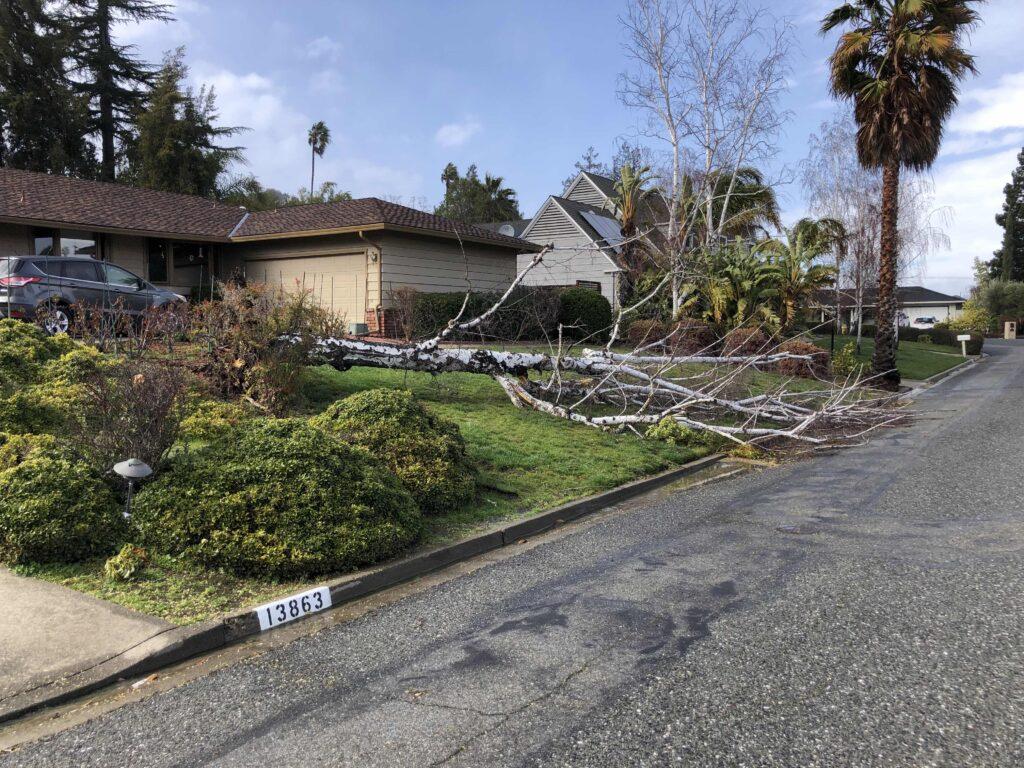This winter, California has experienced weeks of heavy rain and high winds. Students carried umbrellas around school, and those who didn’t walked into class sopping wet. In fact, the storm on March 29 marks the 13th atmospheric river of the season, a record high number. Trees collapsed across Saratoga and road conditions worsened in these storms. Over 65,000 residents experienced power outages in the Bay Area, and although it did not directly impact classes, the school lost power on March 21.
March is not the first time this has happened — California experienced one of its largest storms in years in January as well, with many areas experiencing days of continued rainfall. The earlier storm caused severe issues across the state, including prevalent power outages that have affected around 120,000 residents. The school also lost power on Jan. 10, and many students and teachers have been impacted by the power outages as well.
Changes in climate and more sporadic weather events forecast more extreme storms to come for California in coming years. As climate change continues to impact the extremity and frequency of storms, reconsidering policies has the potential to yield considerable benefits.
The school’s efforts to mitigate the effects of the storm were commendable, with minimal hassles and issues. Despite this, the school should closely consider the possibility of more future storms and try to adapt their response accordingly through increasing student safety and other quality of life improvements.
It is clear that student safety should be the first priority. There have been dozens of deaths and many more injuries across California as a result of the rain. Fortunately, none have occurred nearby, but caution is advised. Having students come to school during power outages and hazardous road conditions can create risks to their safety and additional liability for the school.
Thus, in addition to the school cancellation due to power outages, the school should also base such a decision on the severity of the storm conditions outside. If the storm is too intense and road conditions become dangerous (e.g., collapsing trees and mudslides), school should be canceled in order to ensure student and staff safety.
However, some argue that it is safer for students to be at school when there is power rather than be at home without power. This may apply to some students, but if the school wishes to open during hazardous conditions, over a thousand students or their parents must drive here under dangerous conditions — something that may cause more problems than it prevents.
For example, teachers and students who live in Santa Cruz County can have a tough time reaching school, as CA-17 becomes very dangerous during storms with mudslides and severe accidents common.
Although there haven’t been any student injuries during the recent storms, there have definitely been elevated risks. In the future, this policy reconsideration can greatly benefit student safety.
What should the school do if storms drastically increase when school is in session? Despite severe storms and high winds creating dangers for students, the school appears to have no “lockdown” procedure for weather emergencies. The school has procedures for earthquakes and fires, so creating a similar procedure for heavy rain and high winds will almost certainly be helpful due to the increasing frequency of storms.
In addition to these procedures, another point to be addressed is student awareness. Many students are not completely sure of plans the school has in place during storms. Although emails containing instructions for these situations are usually sent right before school, students often feel a lack of awareness of what will happen, especially during severe storms.
The school has sent out emails and coordinated efforts, but making the situation more clear would benefit more students. A clear guide on school cancellation policies posted in an accessible web page or emailed to students would be a good first step in addressing this issue.
The school should also improve other minor issues with regard to rain to improve student quality of life. For example, traffic is often an exacerbated issue during rain days. With honking cars, clogged roads and difficult conditions, students often arrive at school late.
The traffic personnel at school do the best they can to handle this situation, but the dropoff and pickup lines are still chaotic. Thus, putting more people on the duty and devoting more resources to help with traffic would allow for a smoother school day. In addition, some have voiced that the school should be more lenient with tardies to compensate for the tough traffic situation.
Furthermore, the cafeteria is often packed during rainy days. Increased administrative monitoring to limit the chaos would also benefit the student environment.
While minor, these improvements to the school could greatly improve the functionality of the school during rain days.
School officials have done a decent job dealing with the rain — they have opened the Student Center, sent out guiding emails and helped deal with chaos. However, an enhancement of this effort along with a reconsideration of policies would be critical in helping the school deal with possible future storms.


























